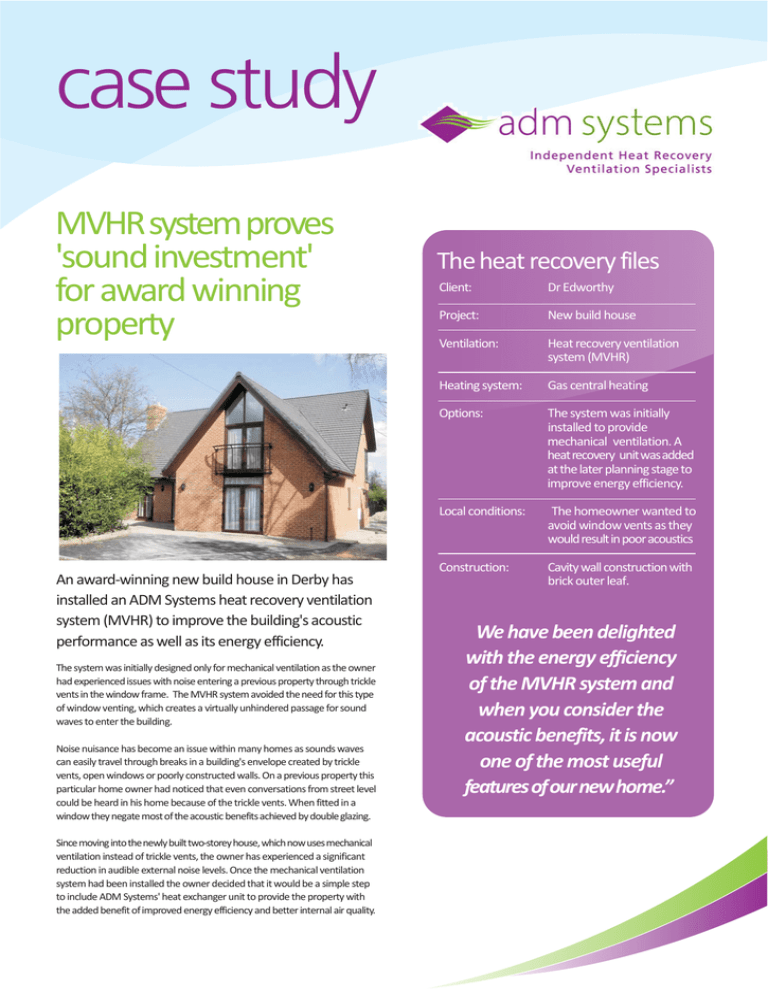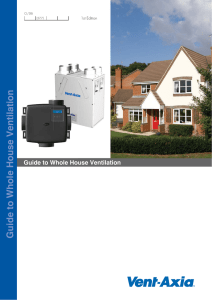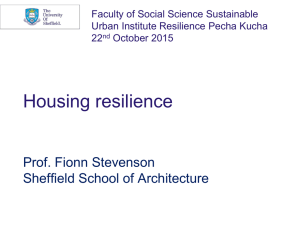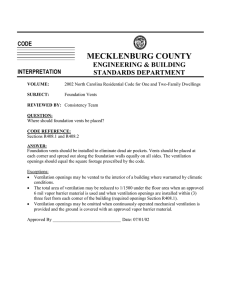MVHR system proves `sound investment` for award
advertisement

case study MVHR system proves 'sound investment' for award winning property An award-winning new build house in Derby has installed an ADM Systems heat recovery ventilation system (MVHR) to improve the building's acoustic performance as well as its energy efficiency. The system was initially designed only for mechanical ventilation as the owner had experienced issues with noise entering a previous property through trickle vents in the window frame. The MVHR system avoided the need for this type of window venting, which creates a virtually unhindered passage for sound waves to enter the building. Noise nuisance has become an issue within many homes as sounds waves can easily travel through breaks in a building's envelope created by trickle vents, open windows or poorly constructed walls. On a previous property this particular home owner had noticed that even conversations from street level could be heard in his home because of the trickle vents. When fitted in a window they negate most of the acoustic benefits achieved by double glazing. Since moving into the newly built two-storey house, which now uses mechanical ventilation instead of trickle vents, the owner has experienced a significant reduction in audible external noise levels. Once the mechanical ventilation system had been installed the owner decided that it would be a simple step to include ADM Systems' heat exchanger unit to provide the property with the added benefit of improved energy efficiency and better internal air quality. The heat recovery files Client: Dr Edworthy Project: New build house Ventilation: Heat recovery ventilation system (MVHR) Heating system: Gas central heating Options: The system was initially installed to provide mechanical ventilation. A heat recovery unit was added at the later planning stage to improve energy efficiency. Local conditions: The homeowner wanted to avoid window vents as they would result in poor acoustics Construction: Cavity wall construction with brick outer leaf. We have been delighted with the energy efficiency of the MVHR system and when you consider the acoustic benefits, it is now one of the most useful features of our new home.” case study Dr Edworthy, the owner of the property explains: “ Initially we decided to have mechanical ventilation to avoid the acoustic compromise of trickle vents in the window frames. It then became apparent that for a minimal additional cost we could add a heat-recovery unit in the loft. ADM Systems helped us with the design and was always ready on the end of the phone to answer any queries.” As well as its acoustic performance, an ADM system offers huge energy efficiency benefits - recovering over 90 per cent of the heat in outgoing stale air and feeding it back into the property as clean, pre-warmed air. Since fitting the heat exchanger to create the MVHR system, A typical heat recovery ventilation system layout of which intensifies with increased relative humidity. Fitting an MVHR system is therefore a highly effective method of tackling this problem. “ Achieving a lower relative humidity makes the whole house feel much healthier,” adds Dr Edworthy. “ We have also noticed that lower relative humidity ensures that any steaming-up on cold surfaces such as windows is minimised and any that does form is quickly cleared.” An MVHR system avoids the acoustic compromises caused by other methods of ventilation. measurements by the homeowner have shown that during winter the system is able to significantly increase the temperature of the external air fed into the property creating a much lower energy loading on the gas central heating system used to heat the home. Dr Edworthy continues: “ We have been delighted with the energy efficiency of the MVHR system and when you consider the acoustic benefits, it is now one of the most useful features of our new home. We keep discovering new benefits of the system, for example, it means that towels dry without having to put them on a radiator!” MVHR systems are an excellent method of controlling the relative humidity at around 50 per cent or lower. This creates a much healthier internal environment by reducing the incidence of dust mites. The detritus from house dust mites and mould spores are potent airborne allergens and prolonged or repeated exposure can lead to asthma, the severity The house also benefits from a noticeable reduction in dust levels, which is achieved because the filters on the heat recovery unit remove dust and pollen from the air entering the house from outside. This helps hayfever sufferers as it means the windows can be kept closed. Dr Edworthy comments: “ Both my wife and I have noticed that there is much less dust in the property, which has reduced the amount of cleaning we have to do!” An additional and unexpected benefit of incorporating the heat recovery unit was that the lower humidity levels helped dry out the newly plastered property much quicker. As the plastering was done during the summer of 2007, one of the wettest on record, this helped avoid delays on the secondary fit-out schedule. “ Many homeowners and builders regard MVHR system as a hi-tech installation, however, we found that fitting the system was much easier than most people think,” concludes Dr Edworthy. This house was nominated by the Building Inspectors and subsequently won its category in the East Midlands Local Authorities Building Control 'Built in Quality Awards'. ADM Systems Fairfax House, 7 Wool Gate, Cottingley Business Park, Bingley, BD16 1PE t: 01756 701051 e: info@admsystems.co.uk www.admsystems.co.uk CS102





